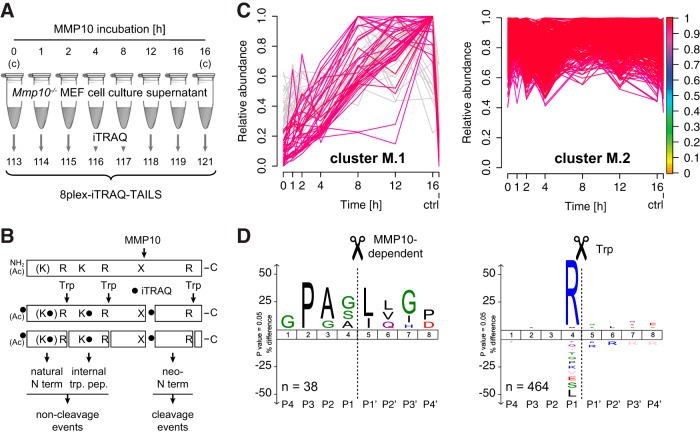Fig. 4.
Time-resolved analysis of the MMP10 substrate degradome. A, Experimental setup. Secretomes from Mmp10−/− MEFs were incubated with recombinant MMP10 or buffer (controls (c)) and analyzed by 8plex-iTRAQ-TAILS. B, Peptides generated either by MMP10 and trypsin (Trp) (cleavage events; time-dependent) or by trypsin alone (non-cleavage events; time-independent). Ac: acetylated. C, Fuzzy c means clustering of abundance profiles of neo-N termini, quantifiable internal tryptic peptides and natural N termini. Peptides with a time-dependent increase in abundance after MMP10 incubation (cluster M.1) are separated from peptides with a relatively constant abundance (cluster M.2). Peptides in cluster M.1 with abundances in control channels higher than 25% of the maximum abundance (gray) were omitted from subsequent analyses. Colorkey indicates membership value α. ctrl: 16 h control. D, IceLogo analysis of cleavage sites corresponding to peptides in cluster M.1 and cluster M.2, respectively. High prevalence of P in P3 and/or L/I in P1′ positions for cleavages in cluster M.1 (neo-N termini; time-dependent) correlate with an MMP cleavage specificity. Peptides assigned to cluster M.2 (time-independent) are mostly internal tryptic peptides (R in P1).

